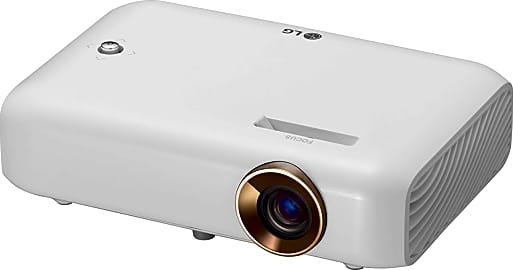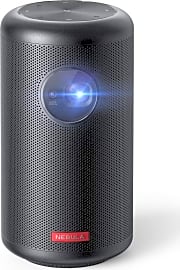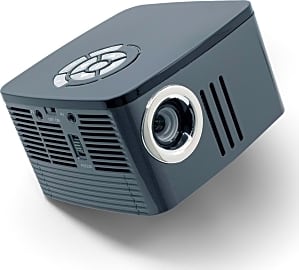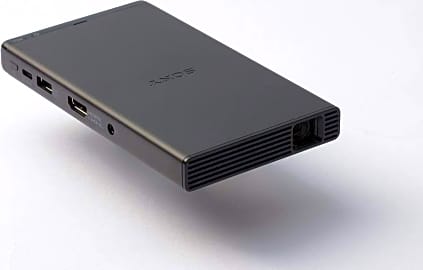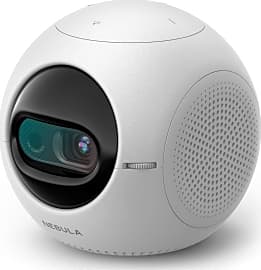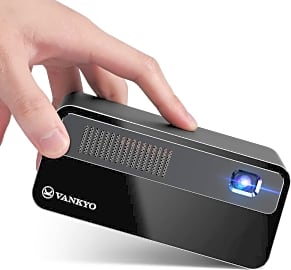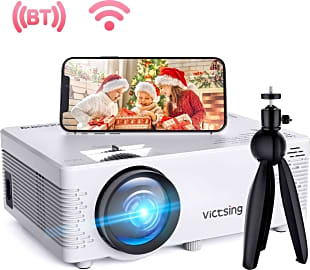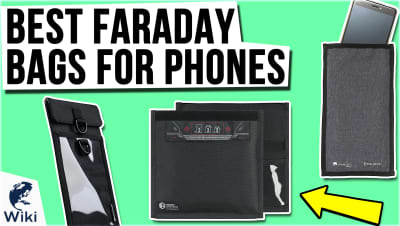The 10 Best Projectors For Phones

This wiki has been updated 34 times since it was first published in March of 2018. Modern smartphones can store many hours of HD movies and stream an endless amount of content, and most have no problem providing HD quality images. While mobile devices seem to be getting bigger and more expensive, display technology is more compact and affordable than ever. On this list you'll find the perfect portable projector to maximize your on-the-go entertainment or presentations. When users buy our independently chosen editorial choices, we may earn commissions to help fund the Wiki.
Editor's Notes
July 24, 2020:
We decided to keep the AAXA P300 Neo, which, like the upgraded AAXA P7, lacks wireless connectivity, because they're both quite capable and do work with a wide variety of phones, although not all of them. Nonethless, there are some worthwhile new choices, particularly from Anker.
The Anker Nebula Mars Pro II is quite powerful, and if you're willing to make the moderate investment, it's one of the best-performing options in this size. Even smaller is the Anker Nebula Capsule Max, which is a refined version of the original Nebula Capsule and is actually quite impressive for such a compact device. Yet more compact is the Anker Nebula Astro, which is also reasonably priced compared to the others, although the hardware inside isn't nearly as powerful.
The LG CineBeam PH550 and LG CineBeam PF50KA both offer high-resolution outputs, and although they're not the most recent models around, their quality is hard to miss, just like most of what LG releases. In the middle of the price range are the Sony MP-CD1, which is pocket-sized but not terribly bright, and the Vankyo Go300, which is significantly bigger but also packs quite a bit more power. If you don't plan on using it near any lighting and you're not a huge stickler for image quality, you might be satisfied with the VicTsing BH400, which is about as low-priced as you'll find for a capable phone projector.
May 31, 2019:
Depending on your smartphone's capabilities, you may be able to output video using a cable. If that's the case, and you want something with great picture quality, consider the Nebula Mars Lite, though it's not the most portable. The AXAA P300 Neo is a little more slim, but it's not quite as bright. The Miroir is neither very bright nor high-resolution, but oh, boy, is it small and inexpensive. If you won't be using it much, or you plan to use it on a hiking trip, the Miroir is the one for you.
If you'd prefer a wireless connection, Anker's Nebula Capsule, Nebula Capsule II, or Mars II are some well-refined ways to do so. The original Nebula capsule is somewhat low-resolution compared to most, but it is very reliable and also a bit less expensive than most of its relatives.
The Laser Beam Pro is an interesting choice because it uses a laser (surprise!) and can therefore produce a little bit sharper picture than much of the competition. But if you're going for a nearly cinematic experience, consider one of LG's CineBeam models. The Nano is the smallest, and it's reliable enough for use in business applications but also looks great when displaying entertainment. Their top models, though, are awfully hard to beat as far as picture quality and dependability go. They're both pretty costly, but very worth the investment, especially if you're looking for a Full HD output. The PF50KA is a little bulky, but it's one of the very rare battery-powered projectors on the market with a 1080p image.
A Big Screen On The Go
The problem here arises when you take your cell phone — or even a moderately large tablet — and try to share a video, episode, or film with others.
These days, more and more people are consuming media on their cell phones, and understandably, there has been some backlash against this kind of consumption from people who have devoted their lives to making media for big screens. The likes of Christopher Nolan or Steven Spielberg would be horrified to catch you watching one of their films on a 37-inch television, let alone a five-inch iPhone.
In some ways, they’re right to be upset, but most accounts of their grumblings focus too much on the issue of screen size, or on the effects of motion smoothing, and not enough on what is equally at the heart of the problem: audience size.
While there is something to be said for curling up in front of your TV by yourself, films were made to be enjoyed in a room full of people. That shared experience matters, as it can color your impression of a movie’s story and execution. We’re social beings, after all, and we take our cues from those around us. And though it’s true that TV wasn’t necessarily always meant to be a communal experience, the last 10 or 15 years of television production have scaled up in scope, budget, and technique to the point where most shows could easily be held to the same standards as film.
The problem here arises when you take your cell phone — or even a moderately large tablet — and try to share a video, episode, or film with others. Holding that little screen in front of your face might suffice for a single viewer as long as they have relatively young and healthy eyesight, but two or more people is simply too many to enjoy anything on a screen that small.
This is where a projector for your phone can come in handy. Now, to be clear, some of these projectors aren’t designed for portability. The only criterion to make a projector viable for use with your phone is a port that can connect to your cell seamlessly. That means the category will include projectors intended to live in your home as part of your entertainment center as readily as it will include battery powered devices you can take with you on the go. In either case, however, you can trust that these can take those small pictures you have on your mobile device and blow them up to a size suitable for a much larger audience than just yourself.
Choosing The Perfect Projector For Your Phone
As we mentioned above, there are two major classes of phone projector, and choosing from between these two will significantly narrow down your search. That dividing line rests on portability. So, if you’re always on the go, a stay-at-home model might not be the best thing for you. On the flip side, if you just want to enable a quick YouTube sharing party in a room full of friends without crowding around a single cell phone like hobos around a drum fire, a less portable option should suit you just fine. Of course, there’s nothing stopping you from picking up one model in each class and maximizing your experience.
For a model you intend to leave at home, you’ll likely want to maximize connectivity.
Once you decide which kind you want, though, how will you know what’s any good? What makes one projector superior to another? The answer to that question starts out differently for each class of projector, but there are some universal traits that are worth considering.
Among portable projectors, power is a big issue. Many of these small devices run on batteries and can last about the length of an epic superhero film. Some, however, can only operate when plugged in, so take a hard look at when and where you’re most likely to employ your projector.
For a model you intend to leave at home, you’ll likely want to maximize connectivity. When you’re out and about, you’ll probably only have your phone to plug into your portable projector, but at home things are a little different. You may want to hook up a TV, a gaming system, a computer, or something else in addition to your phone, so maximizing the number and variety of ports is ideal.
Whichever type you end up with, there are some numbers you’ll likely want to be as big as you can afford them. The first is screen size, which is a measure of how big an image your projector can make without losing resolution. The same rules about viewing distance for televisions apply here, so keep in mind the spaces where you might use your projector and plan accordingly.
Another number you’ll want to watch out for is lumens, which is a measure of a given unit’s brightness. This should be accompanied by a large contrast ratio, which will help your projector provide you with an enjoyable image even if there’s a little ambient light wherever you set it up.
Some options will also offer things like kick stands, carrying handles, remote controls, or built-in speakers, all of which are great to have, but shouldn’t sway you away from a model that boasts superior specs along the lines we just covered.
Building Your Mobile Theater
Let’s say you got yourself a phone projector to be able to take your movie sharing experience on the go. There are some additional things you might want to invest in to ensure you get the most out of your entertainment.
Additionally, should your portable projector accompany you into the great outdoors, there are some outdoor projector screens you can get your hands on, as well.
Even models with built-in speakers won’t offer the kind of soundscapes a good movie watching experience requires. For that you’re either going to need a good pair of Bluetooth headphones, or a high-quality Bluetooth speaker, depending on how many people are watching.
Additionally, should your portable projector accompany you into the great outdoors, there are some outdoor projector screens you can get your hands on, as well. That will keep you from using a simple white sheet, which doesn’t do as good a job as you might expect. Dedicated projector screens are actually made from a particular material that prevents them from redirecting extra light that could reduce your perceived contrast, giving you the best possible image.


